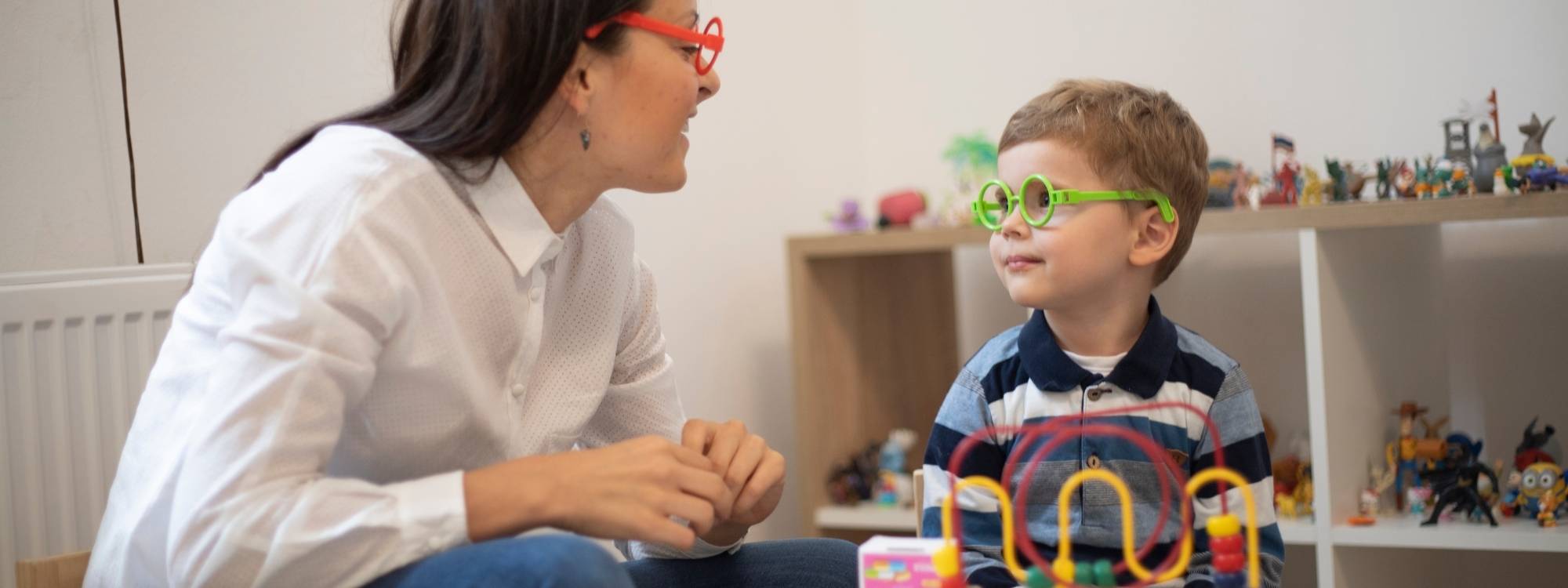Different Kinds of Autism: Understanding the Spectrum
When we talk about the different kinds of autism, it’s important to understand that autism spectrum disorder (ASD) encompasses a range of neurodevelopmental conditions that affect how people communicate, interact, and behave. Modern understanding has evolved to recognize autism not as a separate category but as a spectrum with varying levels of support needs.
How Our Understanding of Autism Kinds Has Evolved
The field of autism diagnosis and treatment has undergone substantial changes. Before 2013, healthcare providers recognized several distinct kinds of autism, including Asperger’s syndrome and PDD-NOS. Today’s understanding, reflected in the DSM-5 (Diagnostic and Statistical Manual of Mental Disorders, 5th Edition), presents a more nuanced view of the different kinds of autism through a spectrum-based approach.
Current Kinds of Autism: Understanding Support Levels
Level 1: “Requiring Support”
Individuals with Level 1 autism can communicate in full sentences but may struggle with social interactions. They may find it difficult to maintain conversations, interpret social cues, or initiate interactions. While they are interested in forming relationships, they often need guidance in navigating social norms. People with Level 1 autism may also prefer structured routines and struggle with unexpected changes. Despite these challenges, they can often live independently with minimal support.
Key traits of Level 1 autism include:
- Difficulty maintaining conversations and understanding social cues.
- A preference for structured routines and resistance to unexpected changes.
- Challenges in initiating social interactions despite an interest in relationships
Level 2: “Requiring Substantial Support”
Individuals with Level 2 autism experience more noticeable difficulties with social skills and communication. They may use only basic phrases to express their needs and have a limited ability to engage in reciprocal conversations. Social interactions often require structured support, and they may struggle with nonverbal communication such as facial expressions or gestures. Repetitive behaviors are more frequent, and significant distress may occur when routines are disrupted. Daily support is generally needed to assist with social and functional activities.
Key traits of Level 2 autism include:
- Limited verbal communication, often using short phrases.
- Difficulty understanding or using nonverbal communication, such as gestures.
- Increased frequency of repetitive behaviors and difficulty with changes in routine.
Level 3: “Requiring Very Substantial Support”
This is the most severe level of autism, characterized by significant communication challenges, both verbal and nonverbal. Many individuals with Level 3 autism are minimally verbal or nonverbal and may rely on alternative communication methods such as picture exchange systems or assistive devices. Social interactions are highly limited, and repetitive behaviors can interfere with daily life. Constant support is required for most activities, including personal care and routine tasks.
Key traits of Level 3 autism include:
- Minimal or no verbal communication, often requiring alternative communication methods.
- Significant challenges in social engagement and interaction.
- Frequent repetitive behaviors that impact daily functioning.
- Dependence on full-time support for most aspects of life.
Understanding Different Support Needs
The following table compares support needs across different kinds of autism:
| Area | 1 | 2 | 3 |
|---|---|---|---|
| Communication | Can speak in full sentences; struggles with conversation flow | Uses simple phrases; limited social communication | Maybe nonverbal or have minimal speech |
| Social Skills | Difficulty with social cues and peer relationships | Marked deficits in verbal and nonverbal communication | Very limited social initiation and response |
| Daily Living | Mostly independent with some support needed | Requires regular support for daily tasks | Needs constant support for most activities |
| Learning | Can follow academic curriculum with support | Benefits from specialized education approaches | Requires intensive individualized instruction |
Early Signs and Different Kinds of Autism
Recognizing the signs of different kinds of autism early is crucial for optimal outcomes. Research shows that Early intervention, such as Pre-ABA Program, can significantly improve developmental progress and daily functioning for children with autism.
Common Early Indicators by Age:
12-18 months:
- Limited or no eye contact
- Reduced social smiling
- Delayed babbling or verbal development
- Limited gesture use (pointing, waving)
18-24 months:
- Limited or no functional words
- Reduced interest in social interaction
- Repetitive behaviors emerging
- Unusual responses to sensory input
2-3 years:
- Delayed language development
- Limited pretend play
- Difficulty with peer interactions
- Strong preferences for routines
The Diagnostic Process for Different Kinds of Autism
Diagnosing autism is a multi-step process that helps determine an individual’s needs and the best possible interventions. Early identification is crucial for ensuring timely support and therapy. Assessments typically involve observations, developmental history, and standardized testing by professionals specializing in autism spectrum disorders. The diagnostic process follows a structured approach:
- Initial Screening:
- Developmental screenings during regular checkups
- Parent observations and concerns
- Early childhood provider input
- Comprehensive Evaluation:
- Medical history review
- Behavioral observation
- Developmental assessment
- Speech and language evaluation
- Professional Assessment:
- Conducted by qualified specialists
- This may include ADOS-2 testing
- Cognitive and adaptive behavior assessments
- Sensory processing evaluation
Treatment Approaches for Different Kinds of Autism
Evidence-Based Interventions
Applied Behavior Analysis (ABA) Therapy
- Systematic teaching of skills: Breaks complex skills into smaller, manageable steps that can be taught through positive reinforcement and consistent practice.
- Data-driven progress monitoring: Tracks your child’s development through measurable goals and regular data collection to ensure the effectiveness of treatment strategies.
- Individualized treatment plans: Creates custom programs based on your child’s unique needs, challenges, and strengths, considering both family goals and clinical assessments.
- Parent training components: Provides hands-on coaching and training to help parents implement effective strategies at home, ensuring consistency across all environments.
Speech and Language Therapy
- Communication skill development: Helps develop verbal and non-verbal communication through targeted exercises and practice in real-world situations.
- Alternative communication systems when needed: Introduces tools like picture exchange systems (PECS) or assistive devices to support communication when verbal speech is challenging.
- Social language use: Teaches conversational skills, turn-taking, and understanding social cues to improve interactions with others.
- Articulation and fluency support: Works on speech clarity and sound production to enhance overall communication effectiveness.
Occupational Therapy
- Fine motor skill development: Improves hand-eye coordination and small muscle movements needed for writing, buttoning clothes, and using utensils.
- Sensory integration: Helps process and respond appropriately to different sensory inputs like touch, sound, and movement.
- Daily living skills: Develop independence in activities like dressing, eating, and personal hygiene through practiced routines.
- School-related skills: Supports classroom success through handwriting practice, organizational strategies, and focus techniques.
Parent Resources and Support
Supporting a child with autism requires a well-rounded approach that includes educational resources, structured home strategies, and community involvement. Parents play a vital role in ensuring their children have access to the right tools and support systems. Here are some key areas to consider:
Educational Support
Education plays a critical role in a child’s development, and individualized support is essential. Schools offer various programs and accommodations to meet the needs of children with autism. Key aspects include:
- IEP development and advocacy: Individualized Education Plans (IEPs) help tailor education to the child’s specific needs. Parents should actively participate in the development and review process.
- School accommodation planning: Ensuring children receive the necessary support, such as additional time on assignments, sensory-friendly classrooms, or specialized instruction.
- Progress monitoring: Regular assessments and meetings with teachers and therapists to track developmental and academic progress.
- Regular team meetings: Collaborating with educators, therapists, and specialists to adjust strategies as needed.
Home Strategies
Creating a structured and supportive home environment can help children with autism thrive. Simple adjustments can improve daily routines and reduce stress. Consider the following approaches:
- Consistent routines: Predictability helps reduce anxiety and supports learning. Setting a structured daily routine can make transitions easier.
- Visual schedules: Using pictures, charts, or digital tools to illustrate daily tasks and expectations.
- Structured environments: Reducing distractions and creating designated areas for learning, relaxation, and play.
- Positive behavior support: Encouraging desired behaviors through reinforcement and clear communication, rather than punishment.
Community Resources
Beyond the home and school, various community resources can provide additional support for both children and their families. Engaging with local programs can enhance social skills and offer relief for caregivers. Some options include:
- Support groups: Connecting with other parents and caregivers for shared experiences, advice, and emotional support.
- Recreational programs: Activities such as art, music, or adaptive sports that encourage social engagement and self-expression.
- Respite care: Short-term relief services for parents and caregivers, providing professional support for children when needed.
- Social skills groups: Structured groups led by therapists or educators that help children develop essential communication and social interaction skills.
Providing a child with autism the right mix of educational, home-based, and community support can make a significant difference in their development and well-being. Parents and caregivers are encouraged to explore these resources and collaborate with professionals to create a nurturing environment for their child’s growth.
Conclusion
Understanding the different kinds of autism is crucial for providing appropriate support and intervention. While each person’s experience with autism is unique, recognizing these different support levels helps ensure that individuals receive the right kind of assistance they need to thrive.
Ready to help your child thrive? At Champions ABA, we provide personalized ABA therapy to support your child’s unique journey. Our expert team creates individualized treatment plans focused on building essential skills and unlocking potential. Contact us at (877) 242-1744 to schedule your free consultation and take the first step toward your child’s success.
FAQs
What are the different kinds of autism?
Currently, autism is classified into three kinds based on support levels: Level 1 (requiring support), Level 2 (requiring substantial support), and Level 3 (requiring very substantial support). This classification helps determine the appropriate level of support needed for each individual.
What kind of autism is most common?
Level 1 autism, requiring the least amount of support, is the most commonly diagnosed kind of autism. These individuals can typically communicate in full sentences and manage many daily tasks independently, though they may need support with social interaction and organization.
Can someone with Level 1 autism live independently?
Yes, many individuals with Level 1 autism can live independently, as they often maintain employment, handle daily living tasks, manage their finances, live on their own, and develop meaningful relationships and families, though some may benefit from occasional support in areas of particular challenge, especially during times of stress or transition.
What does Level 2 autism look like?
Level 2 autism typically presents with notable verbal and nonverbal communication challenges, marked social difficulties even with support, inflexible behaviors that interfere with functioning, limited interests and repetitive behaviors, and a need for daily support with tasks and activities.



